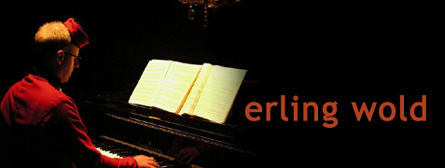Anyone who has played one of my little insouciances has experienced my fetishistic fascination with triplets and quintuplets and, to a smaller extent, septuplets and 21-lets and all the other n-lets. Although the notations are the same no matter what the underlying intent, my enchantment with them comes from a variety of sources. The first is just the usual old-modernist fascination with the joys of complication, combined with the constructed textural landscapes of the Impressionists, then to the Ligetis as well as the totalist post-modernists, who all love to break up rhythmic lockstep by floating the notes by each other on parallel tracks, waving at each other through the windows as they pass. And there is the simple mathematical interest, where many composers have thought that maybe bigger integer ratios ratios in rhythms lend a spiciness like those same ratios in pitches.
The second is the way I was taught to set text, which has stuck with me, probably more literally than intended, calculated to capture something of natural speech rhythms, as no one speaks in quarters and eighths when not rapping. It's still a musical approximation, allowing the vocal line to connect with the rhythm while still flowing a bit, and also notating something beyond just notation, something like performance, e.g. the way a crooner delays the entrance of every new phrase.
But finally, and maybe this is the most important, it is that I grew up with those rhythms. When I was studying tabla, I would while away the time on walks to and from campus tapping out polyrhythms over and over, 3 against 4, 4 against 3, 5 against 3, 4 against 5, etc. I was pretty facile up through the 9s, and proud of myself, but shamed when my teacher could so easily play 11s over 7s and beyond, and not just straight rhythms, but tabla patterns with all the details included.
This is all to lead up to my curious experiences when other musicians confront my scored demands. One, I've had singers exclaim WTF is it with all those triplets, not to mention the 9:8s, where I simply shrug my shoulders, meaning well, that's what's there and that's what it is.
But even more exciting is how these little landmines are interpreted by instrumentalists. Some cause immediate freakout, especially if across the bar lines or shifted by a little something, which is understandable - they freak me out as well - although nothing gives me greater pleasure listening nor playing than a beautifully performed series of triplet or dotted quarters running over a set of every-changing 5/4s, 7/8s, 4/4s - what delight! However, problems arise even when an X-let stretches simply over a prevailing metric unit. Consistently the beginnings are stretched and the endings compressed. Triplet halves move toward two dotted quarters followed by a regular quarter, quintuplet eights are almost a triplet followed by a duplet. I have decided that, if I ever start a music conservatory, I will walk with the students to and from school and do what I did, with the additions of skips and hops, all in three-quarter time.
Cold early morning here in San Francisco while over the link to the orchestra, it is late in Skopje, snowing.









